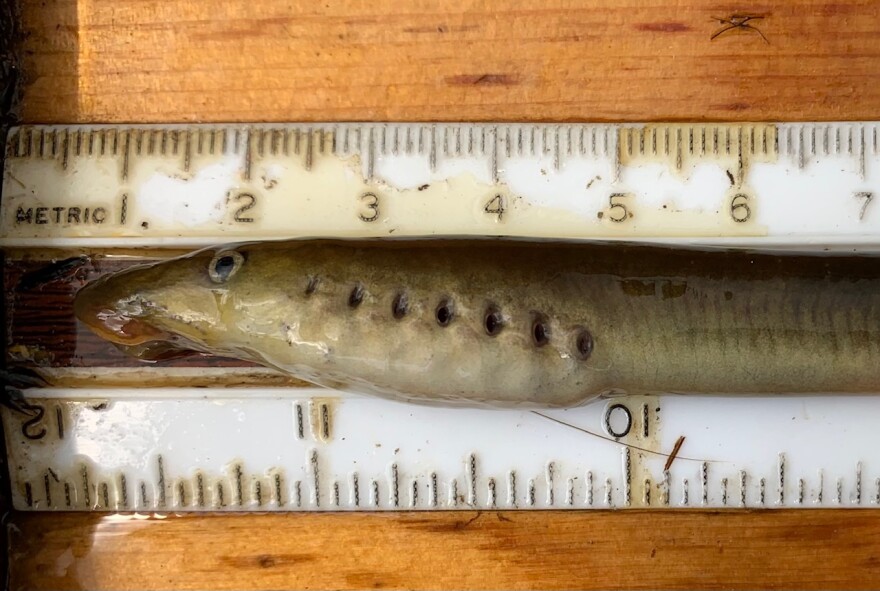For more than a week, Tuluksak resident and subsistence fisherman Nicolai Napoka has been traveling 4 miles down the Kuskokwim River with his smelt dip net.
Sometimes he goes by himself, other times with his friends, but he always has an ice pick at the ready to carve a rectangular block out of the ice. Once he’s got a hole, he uses a 4-foot stick with a bunch of nails at the end as an eel rake.
“It's been like the first time we've been going out for at least a week of doing it. And that's the longest run,” Napoka said. “I had another phone call saying that Kwethluk was dipping last night, so probably the second run is about to reach here.”
It’s river eel season on the Kuskokwim River, and subsistence fishermen, like Napoka, are lining up to catch their fill. He said that right now, they’re more active in the evenings and they’ve been running for several days.
“A run means [in previous years] we've been dipping for only like two days and they're all gone. And they just passed, but this is the longest run we've been dipping this year,” Napoka said.
These river eels, also known as Arctic lamprey, are headed upriver, but they won’t spawn just yet.
“They just kind of hang out and wait until spring arrives when the water warms up, and then they move in and spawn,” said University of Alaska Fairbanks Fisheries Biology Professor Trent Sutton.
Sutton said that it’s not clear how long these river eel runs will last.
“You know, it can vary quite a bit, like how long that duration is, when they're running under the ice surface. You know, it can be anywhere from a couple of hours to a couple of days. And it sort of depends on run size, how many lamprey actually enter the river,” Sutton said.
When it comes to how long these runs can last, Sutton said that scientists rely on data from another river.
“Most of what I know about Arctic lamprey is based on the sort of activity that takes place in the Yukon River. Because the activity in the Kuskokwim is a subsistence fishery, and the Yukon is a combination of both a subsistence and a commercial fishery. And so there's quite a bit more data available and information on that,” Sutton said.
Subsistence can mean a lot of things, said Napoka. For instance, providing for Elders.
“We give them to elderly people because back then they used to eat them. So it’s like bringing back memories of what they used to eat when they were younger,” Napoka said.
But that’s not all.
“I mostly hear people just snacking on them because they’re rich, really rich in fat,” Napoka said. “Even if you fry them or bake them, the oil will seep out a lot of oil because you gotta get the oil out of it every time you're cooking. I like them more baked than fried. There's a lot of ways that people cook them, but I like them baked. We cut them up, and store them, and put them in Ziploc and freeze them. Some with a lot of dogs because they have lots of protein and lots of fat. They've been dipping them for their dogs too, for this long winter.”
Basically, Napoka doesn’t expect this bumper run to go to waste.




